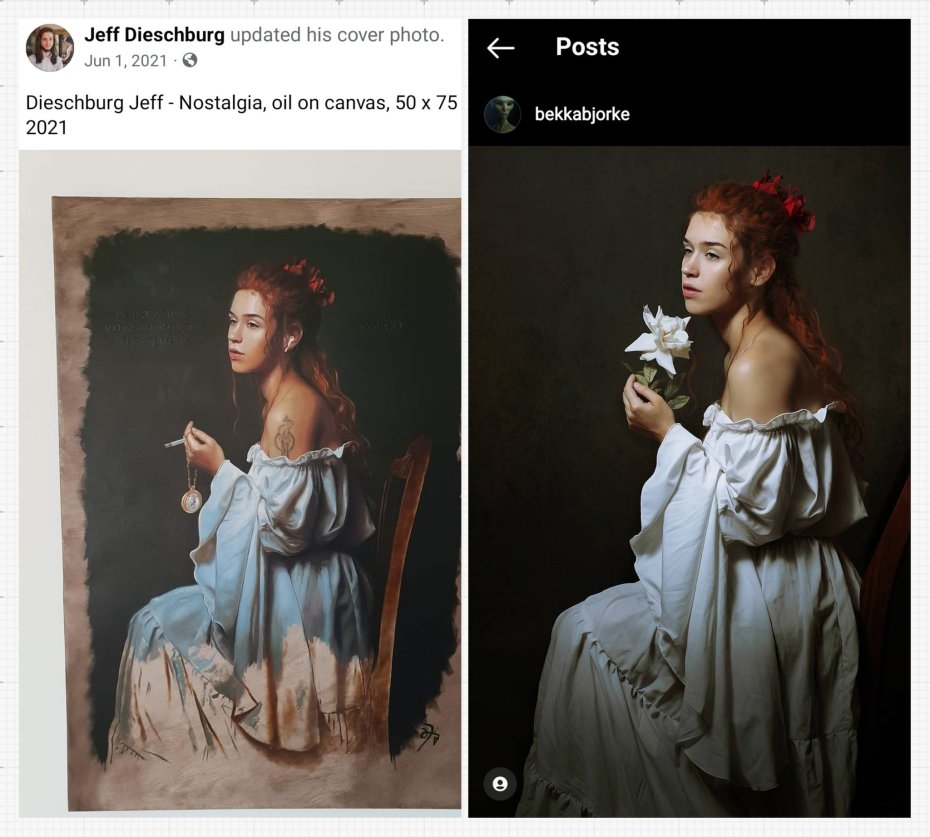Jeff Dieschburg is a Luxembourgish artist whose strikingly-modeled oil paintings quickly brought him a little fortune and a lot of fame. His "Turandot", exhibited at the Strassen Stroossen Culture Center, won a €1,500 prize and was presented to Luxembourg's Princess Stéphanie. But there's a problem with it, one that became apparent as news of his talent spread: it's virtually identical to a photograph by Jingna Zhang, but for an earring and Dieschburg's adroit use of the Flip Image command. Even the hairs and rose petals match up.
The Strassen Commune deleted its Instagram post announcing Turandot's prize, but did not contact Zhang, she says. Instead, Dieschburg himself emailed her after her tweet went viral. And not to apologize, either, but to lecture her about copyright.
"I was inspired by some of your artistic choices (posture of the model, the drapery, and the flowers) but I created an image in an artisanal way, with different colours, a different technique, invert & representation of the figure and additional features (sword, inscriptions, earrings) and the result dialogues with a second crucial composition, a self portrait. Together they define my work Turandot," he mansplained, according to Zhang. "Furthermore, the artistic strategy of citing an existing image is a more than common matter especially in non-digital mediums."
After Zhang reported Dieschburg's appropriation of her work, another photographer came forward noting a similar experience. Bekka Björke:

Dieschburg's painting is on sale for €6,500.
While it's true that transforming an original can support a "fair use" or "fair dealing" defense to a claim of copyright infringment, Dieschburg's claims to have used the photos only as "reference" seems quite unconvincing.
His paintings change very little in the photographs, but for a flourish here or there. This can be accomplished through various methods, but the most obvious one would be to manipulate the photo in photoshop, print or project it onto physical media, then paint over that.
Embedded below are the two images superimposed, as a GIF, fading between the two images every two seconds. As you can see, everything lines up pixel for pixel. It is, in my opinion, a lightly-edited mechanical reproduction.

I wouldn't go out on a limb to say that the Dieschburg reproduction has key signifiers of on-demand Chinese oil painters, but I sure am thinking about the possibility. And so should his pre-emptively hired lawyer, already running his mouth in local media.
"I can't stand that an exceptional talent is being persecuted for nonsense," he told RTL.






